London Wall
- Gethin Thomas

- Jul 22
- 4 min read
London Wall is a wide street in London, laid out in the 1950's. Some of London Wall already existed before the war running from Moorgate to Bishopsgate, but during the war most of the land west of Moorgate was laid waste by bombing leading to many new developments like the new street, London Wall, which we see today. It also led to developments like the Barbican complex that I feature here.
London Wall as it suggests is the original route of the ancient city wall of London giving rise to names like Moorgate and Bishopsgate, being the sites of the original gates into the city through that ancient wall.
You couldn't be looking at anything that appears less historic or ancient in this photo, below, but that concrete honeycomb structure hides a secret. In my last post I mentioned I was going for a walk with my camera to see what I could see, but in this case you would never see what I am about to show you if you didn't know where to find it.
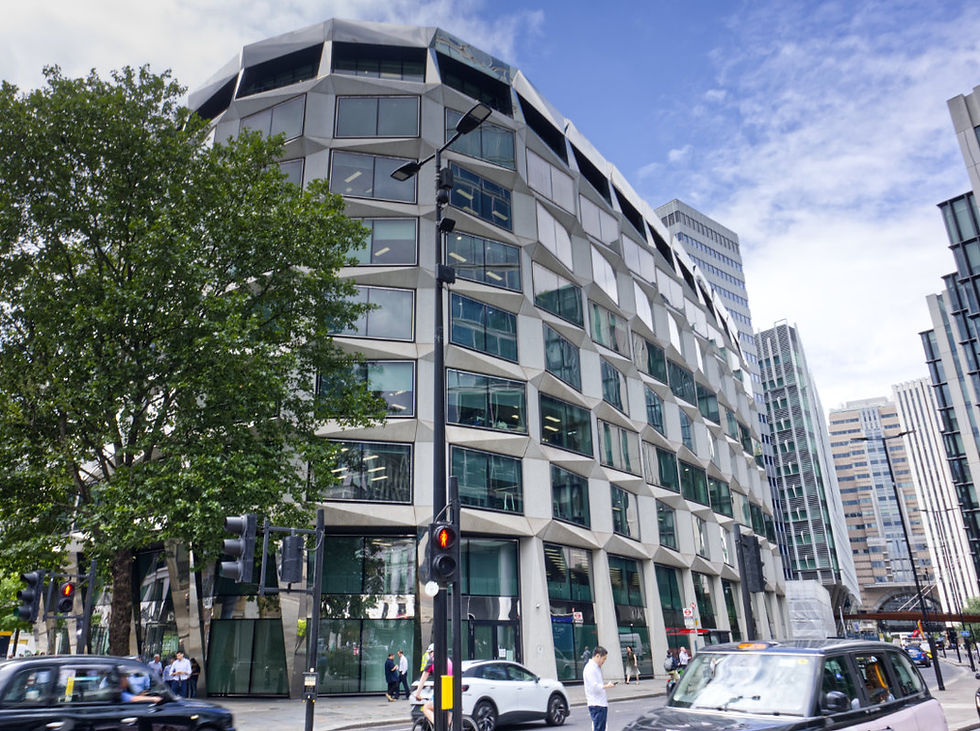
This door, that doesn't even seem to be accessible, is where I am about to find what I am looking for, although at this point I wasn't convinced. There is no information inviting you in, although bizarrely, in what seems to be a side door to a private office block, there is a small sign offering toilets.
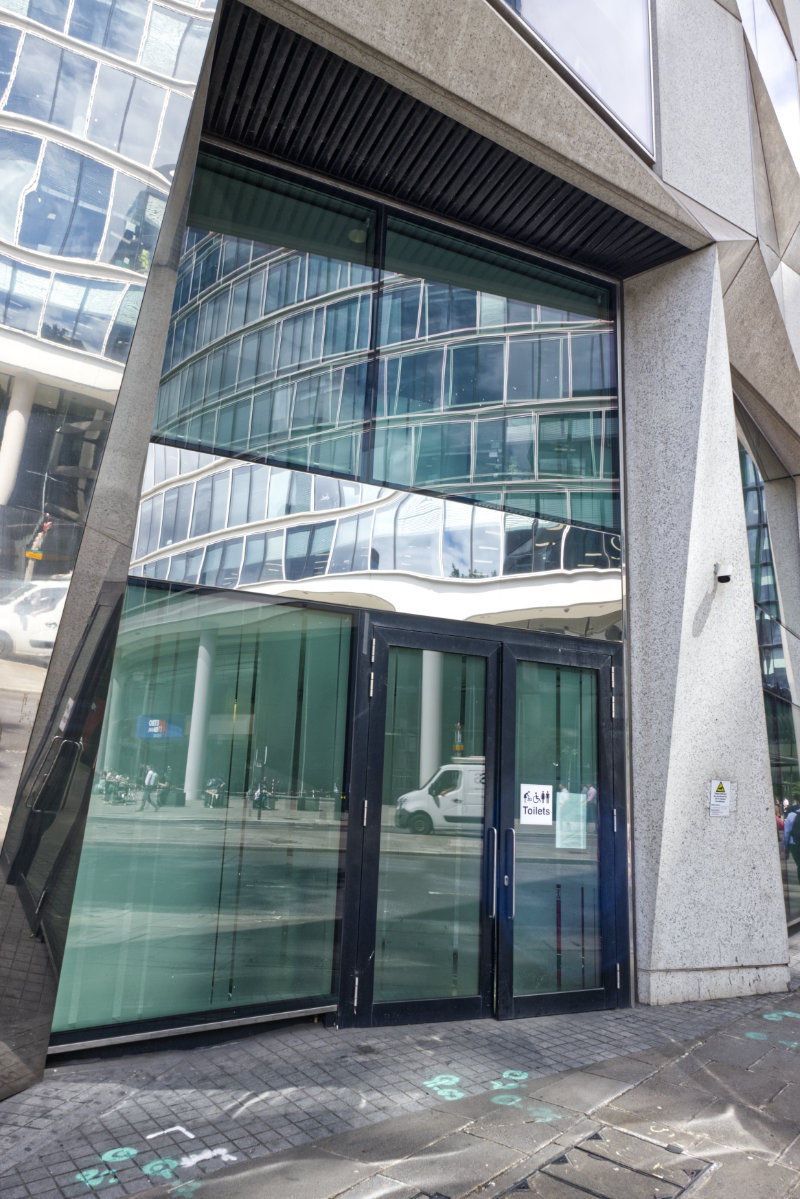
Inside a sign does explain that this is London Wall Car Park, not surprising as the address is London Wall. You would not know this from outside.
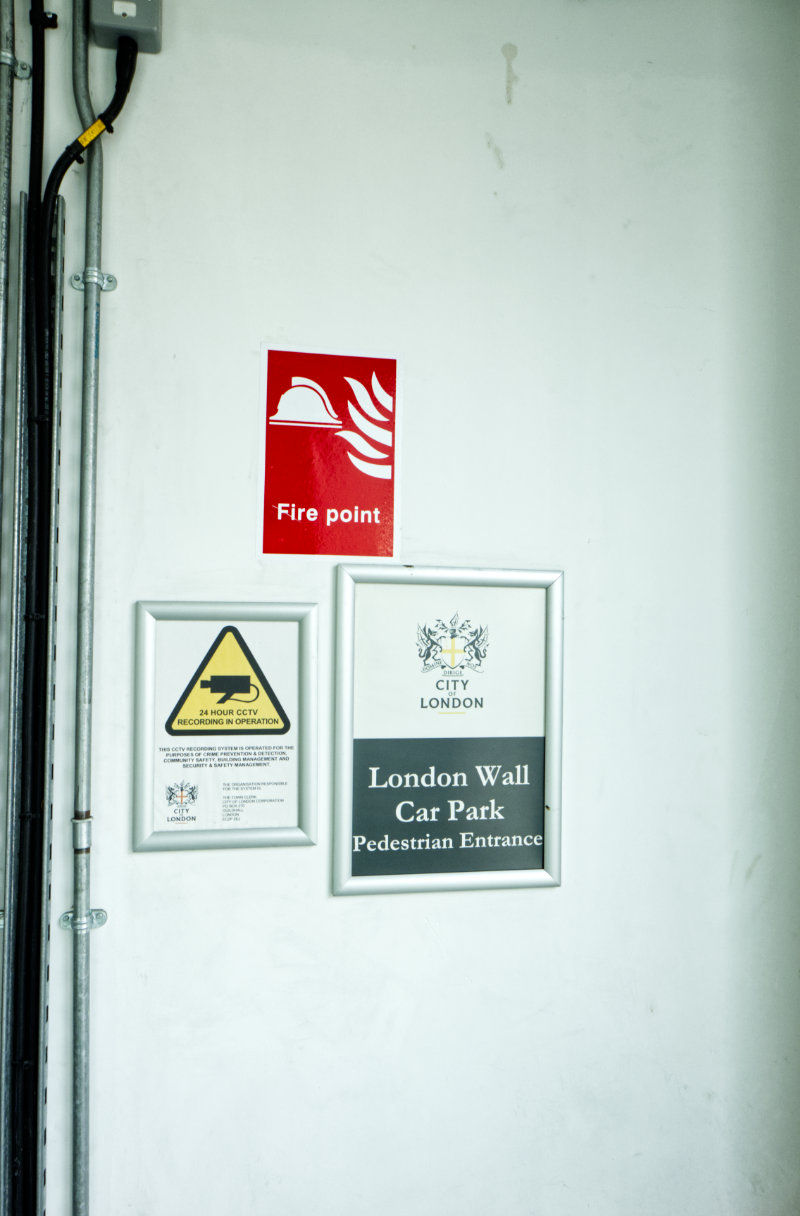
More directions for the toilets and not much else.
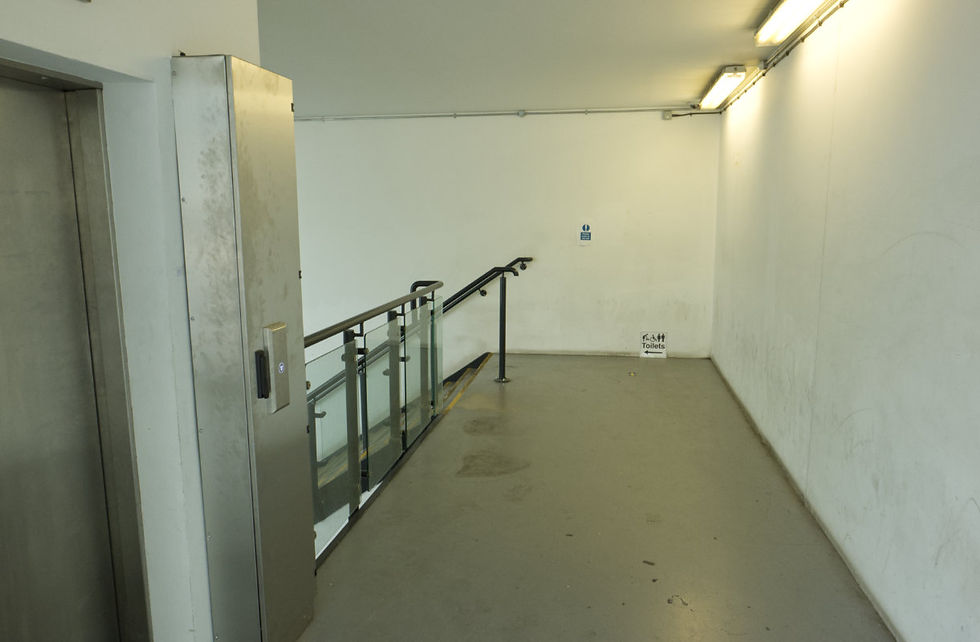
Down into the darkness below and another toilets sign. Through another door and a short dark corridor and those toilets turn out to be permanently closed, so I carry on through another door and it gets darker still.
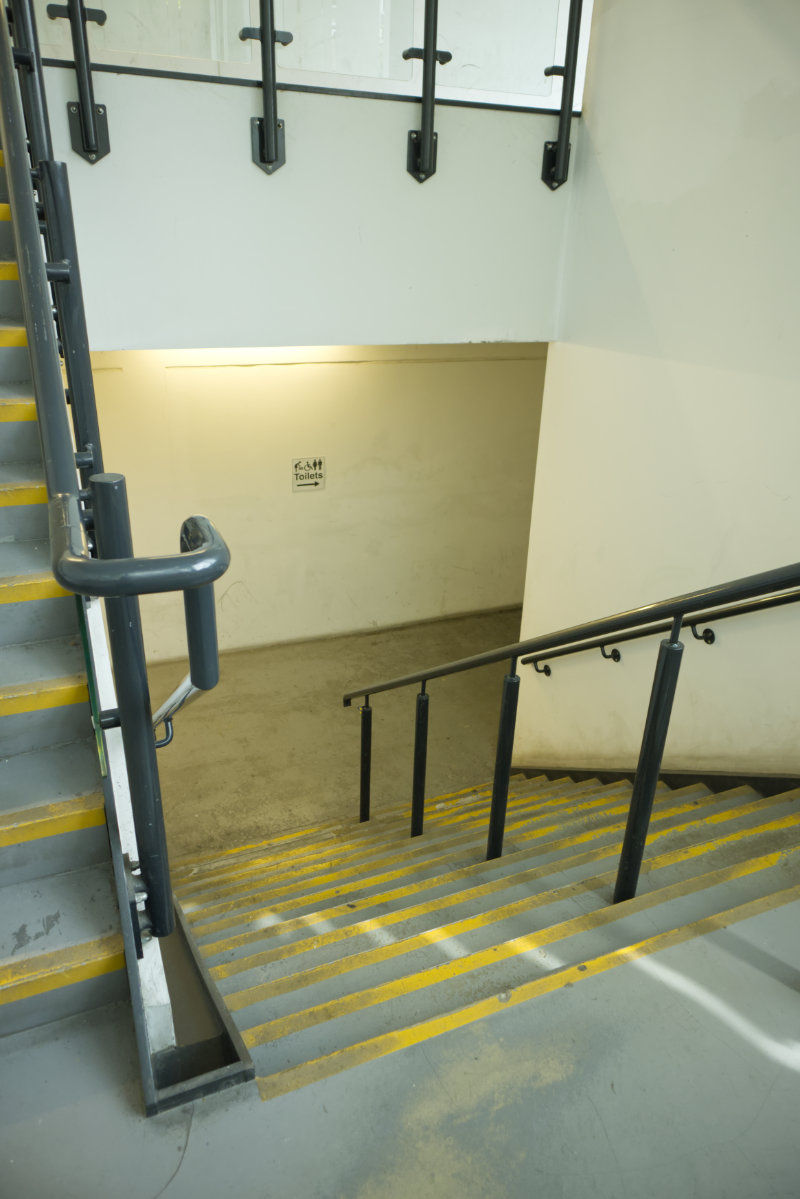
I turn another dark corner to be faced with this sight. I can hear distant engines of cars arriving, maneuvering, parking, and leaving. The sharp eyed will see that the bays have large numbers painted on them. This is so car owners can find their cars amongst the shadows. How many of us have briefly lost our cars like that?
Some of those numbers are missing though. I can see that they go from 52 in the distance to 55. What happened to 53 and 54?
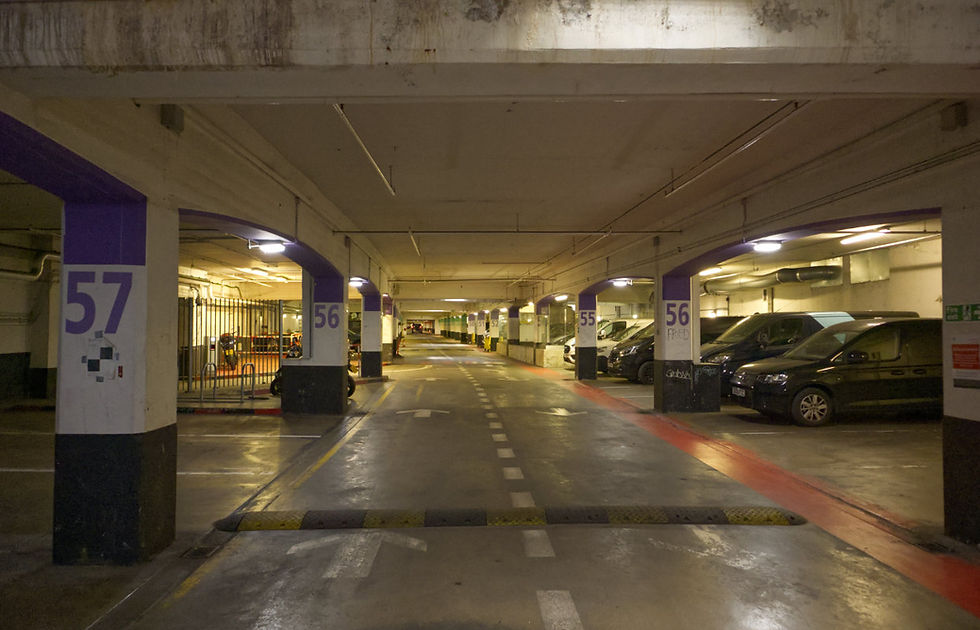
As I get nearer to the mystery I can see that there is in fact a 54 which is partially obscured by some glass walls. Then I see a large dark shape behind the pillars and glass.
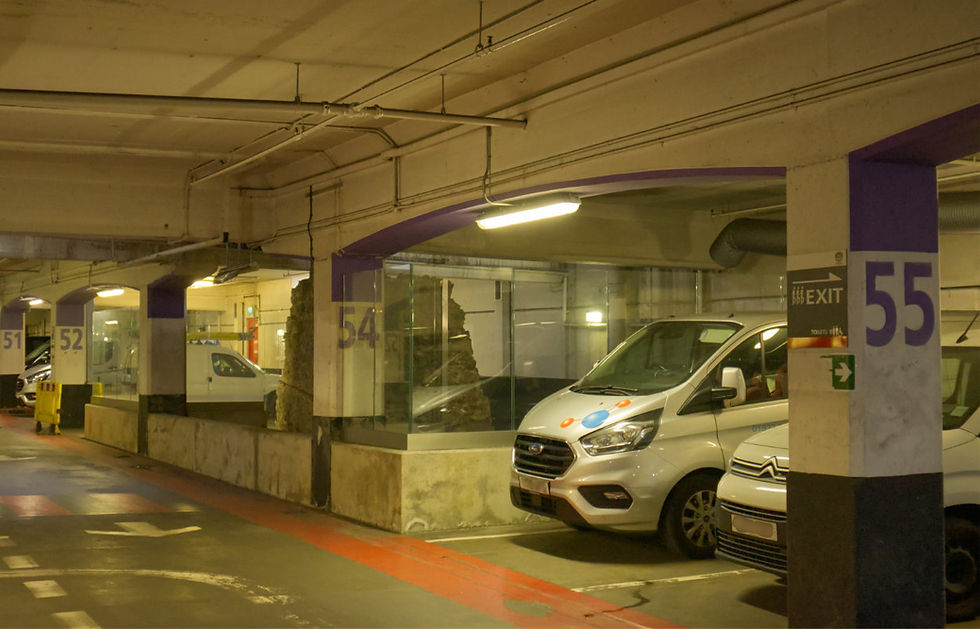
This is a ruined remnant of London's original Roman city wall. It was built 1800 years ago in around 200 AD. There are several places in London where you can see remains of this wall, as it was originally about two and a half miles long defining the city for a thousand years. This has to be one of the most unusual places to see it. Other sections can be seen above ground as I will show you in my next post. Other sections are found built into modern developments, in basements like this, under an art gallery or seen through a glass skylight in a road.

Some remnants are larger and more impressive, but this one has a sort of magic all of its own, caressed as it is in the concrete arms of a car park..
The residents built a stone wall around Londinium in about AD 200, although there may have been a much earlier fortification. The wall was roughly 2.5 miles long, enclosing an area of about 134 hectares – making London the largest enclosed urban area in Roman Britain.
The wall was 2–2.6 metres thick at its base and stood over 6 metres high. It was constructed with a core of rubble bound in a hard mortar and faced on either side by roughly squared stone blocks. Every fifth or sixth course was a horizontal band of red tiles, intended to bond the core to the facing stones. In front of the eastern face of the wall was a ditch, which was up to 1.8 metres deep and 4.8 metres across. English Heritage

In this photo the bands of red tile are more easily seen.
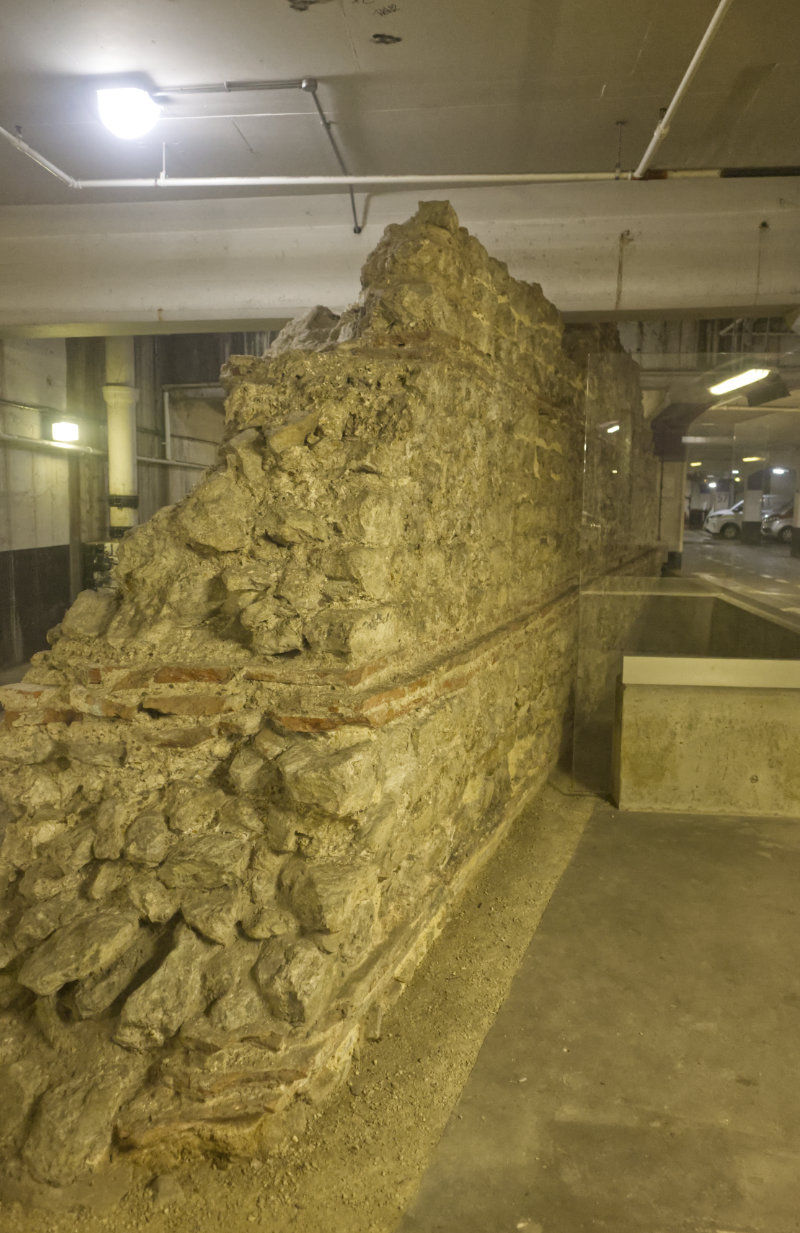
This is one of the highlights of my recent photo walk. It was difficult to find but well worth the effort, moreso because of its unlikely home. Only two hundred years later the Romans were gone.
Unlike most of the Western Roman Empire after the Romans left, in Britain the dominant language remained almost exactly as it was before the invasion. Common Brittonic survived and later split into regional languages such as Cumbric, Cornish, Breton and Welsh. It is estimated that around 800 Latin words were incorporated into the local language.
As a result, the English we speak today is not a Romance language, and is based instead on the language of the Germanic tribes who migrated to Britain from the 5th century onwards, pushing those Brittonic languages into Wales, Cornwall and Scotland.
My next post will feature more ancient walls only metres away from this place, but above ground.


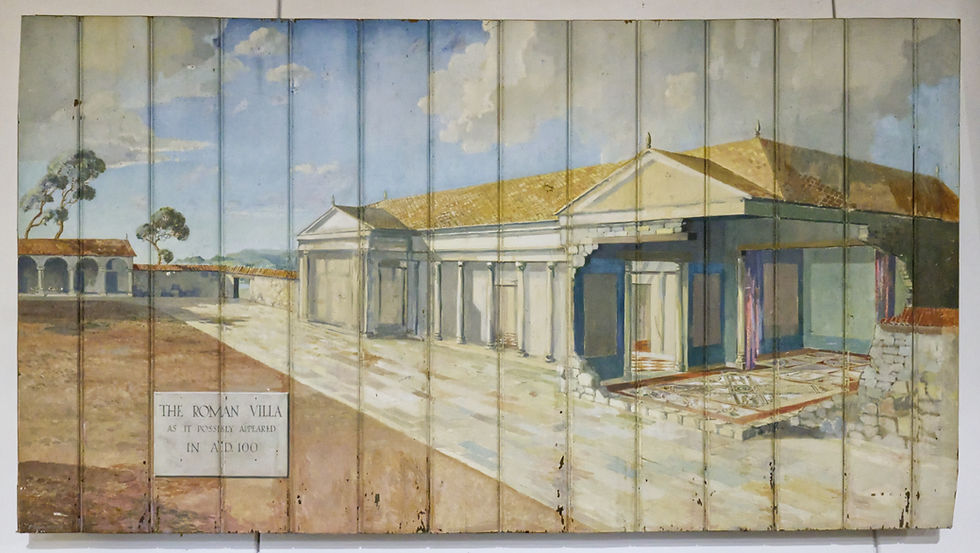

Comments